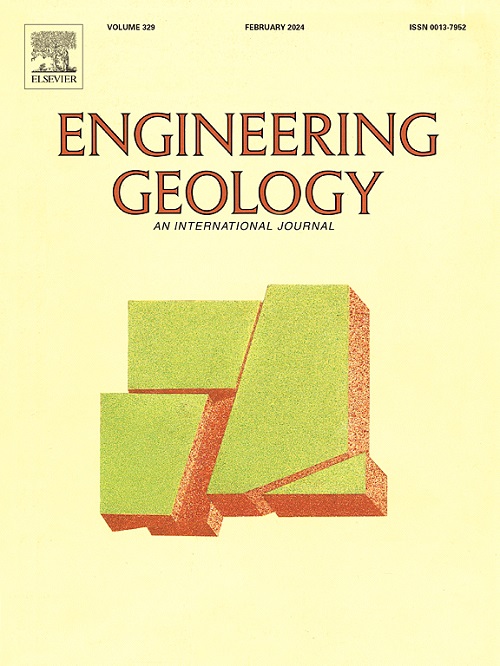从意大利艾米利亚冲积平原的全面试验中推断沉积物堆积模式对砂土液化的影响
IF 6.9
1区 工程技术
Q1 ENGINEERING, GEOLOGICAL
引用次数: 0
摘要
该研究重建了受 2012 年艾米利亚地震(意大利北部邦德诺遗址)影响的沙体的几何形状和沉积构造,并利用全尺寸爆破实验数据检验了沉积物堆积模式的作用。研究综合了遥感和地表地质绘图、地层取芯和锥入试验等地下调查、砂的粒度和岩相学、岩土工程和地球物理监测。数据与同样位于震中地区的米拉贝罗爆炸试验场进行了比较。结果凸显了沉积物的异质性及其机械和成分特性在调节冲积环境液化中的重要作用。正如爆破监测所显示的那样,埋藏的砂质体的横向限制、其厚度以及是否存在厚的不液化地壳会影响过大的孔隙水压力的消散,从而根据当地的地层结构影响液化现象的持续时间。本文章由计算机程序翻译,如有差异,请以英文原文为准。
Sediment stacking pattern effect on sand liquefaction inferred from full-scale experiments in the Emilia alluvial plain (Italy)
The geometry and the depositional configuration of sand bodies affected by the 2012 Emilia earthquakes (Bondeno site, northern Italy) were reconstructed and the role of the sediment stacking pattern was tested using data from full-scale blast experiments. The research integrates remote sensing and surface geological mapping, subsurface investigations including stratigraphic coring and cone penetration tests, grain-size and petrography of sands, geotechnical and geophysical monitoring. Data are compared with the Mirabello blast test site, also in the epicentral area. The results highlight the preeminent role of sediment heterogeneity and their mechanical and compositional properties in modulating liquefaction in alluvial settings. The lateral confinement of the buried sandy bodies, their thickness, and the occurrence of a thick non-liquefiable crust influence the dissipation of the excess pore water pressure, as indicated by the blast monitoring, and therefore the duration of liquefaction phenomena, according to the local stratigraphic architecture.
求助全文
通过发布文献求助,成功后即可免费获取论文全文。
去求助
来源期刊

Engineering Geology
地学-地球科学综合
CiteScore
13.70
自引率
12.20%
发文量
327
审稿时长
5.6 months
期刊介绍:
Engineering Geology, an international interdisciplinary journal, serves as a bridge between earth sciences and engineering, focusing on geological and geotechnical engineering. It welcomes studies with relevance to engineering, environmental concerns, and safety, catering to engineering geologists with backgrounds in geology or civil/mining engineering. Topics include applied geomorphology, structural geology, geophysics, geochemistry, environmental geology, hydrogeology, land use planning, natural hazards, remote sensing, soil and rock mechanics, and applied geotechnical engineering. The journal provides a platform for research at the intersection of geology and engineering disciplines.
 求助内容:
求助内容: 应助结果提醒方式:
应助结果提醒方式:


